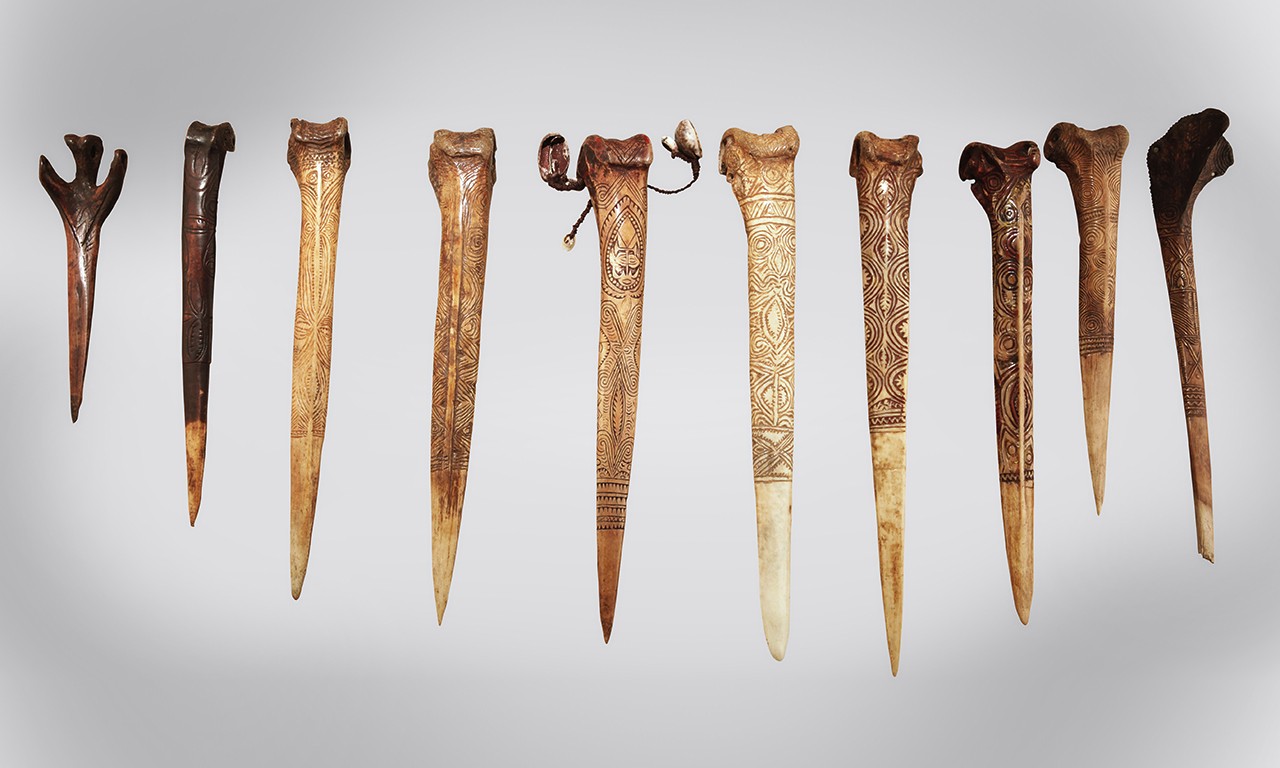 |
Bone Daggers (Yina and Amia Ava), 20th Century
Abelam and Iatmul culture; East Sepik Province, Papua New Guinea, Melanesia, Oceania
Cassowary bone and pigment
2010.22.5-.31
Gift of Anne and Long Shung Shih |
They do Move in Herds
Unassuming dinosaurs of the modern era that they are, cassowaries are incredible creatures. For example, though flightless they can leap up to seven feet vertically; when feeling threatened they emit a low rumble that has been described as bone-rattling; and they have otherwise been known to make sounds that can be heard miles away. Much to the good fortune of several cultural groups throughout New Guinea—especially those of the East Sepik River Province, and on the island’s opposite end, the Asmat of Indonesia’s West Papua Province—cassowary bones are every bit as impressive as the big birds are themselves, with qualities which make them ideal for carving into daggers. This post primarily explores cassowary bone daggers in terms of why these knives were made, their usage and their decoration.

|
|
Bone Daggers (Yina and Amia Ava), 20th Century
Abelam and Iatmul culture; East Sepik Province, Papua New Guinea, Melanesia, Oceania
Cassowary bone and pigment
2010.22.9,.12,.19
Gift of Anne and Long Shung Shih |
Bird/Man
Bone was one of the most important mediums in the stone tool culture of Papua New Guinea, with an informal hierarchy for preference based on species. Fewer human femur daggers are seen, but they were the most prestigious knives, especially when the perquisite bone was gained from a deceased ancestor or from slain foe. The only alternative for these bone daggers was the tibiotarsus of the cassowary—the middle of the three bones in a bird’s leg. A scientific analysis of some 30 cassowary and human bone daggers interestingly shows that human bone daggers are sturdier than cassowary daggers, a factor of shape rather than bone density or anything else, but secondary to mystical reasons this perhaps further fomented the preference for human bone knives.
|
|
Bone Daggers (Yina and Amia Ava), 20th Century
Abelam and Iatmul culture; East Sepik Province, Papua New Guinea, Melanesia, Oceania
Cassowary bone and pigment
2010.22.4,.6,.7
Gift of Anne and Long Shung Shih |
Well-Casque Role
Several factors go into the usage of both bones as knives and the non-utilitarian rationale behind the usage of cassowary bones is especially fascinating. Endemic to the entirety of New Guinea, these prehistoric holdovers have the benefit of their mythological traits and observed abilities being almost entirely the same. At times passive, at times fierce, cassowaries are known to attack humans—usually for food-motivated reasons—and when using their talons these skirmishes have been known to be fatal. Cassowaries also occupy an important space in Papuan cosmology. Some northeast Papuan groups hold that it was a female cassowary that created land and was a progenitor to the first men. For Sepik Region groups cassowaries further symbolize both male and female attributes and are viewed as a complete being able to reproduce autonomously. During a man's final initiation period he receives a bundle of cassowary feathers that are worn around the neck like a short cape.

|
|
| Images of Owus and Baride Asmat men, each with cassowary bone daggers tucked into a woven band. |
Fight or Flightless
The usages of cassowary and human bone daggers are far more nuanced than the implements of cannibalism and male-exacted carnage first presented by early European anthropologists. Certainly, the primary usage of these tools in the Sepik River region was utilitarian. Their edges were not sharpened but their tips were shaved down to a nail’s point, making them ideal stabbing implements. Some daggers were used as hunting tools and for carving game. As tools of warfare they were used in close-range combat to finish off wounded foes or to stealthily end otherwise engaged combatants with a well-placed downwards thrust. Due to their prestige and status of both cassowary and human bone the daggers were also used for several ritual purposes, commonly displayed initiations and other secret ceremonies. In both the Sepik and Asmat regions when these bone daggers were not being used they were usually tucked into a plaited band on a man’s upper arm.

 |
Bone Dagger, early to mid 20th Century
Asmat culture; Papua Province (Irian Jaya), Indonesia
Cassowary bone, claw, fiber, feather and bead; 15 1/8 × 5 × 2 in.
2018.13.45
Gift of Anne and Long Shung Shih |
It’s a Knife to Meet You
The carved designs and decorations of these knives are also well-worth discussing. Sepik-area knives tend to feature some sort of incising that has further been accentuated with pigments. These designs can be geometric, featuring the same whirlpool motifs seen in other Sepik objects, but they are also known for their depictions of either human faces, animals, or the benevolent ngwalndu clan spirits that protect yam harvests and otherwise serve as boons. The ball joints of Sepik bone daggers are sometimes carved into unique zoomorphic shapes. When compared against the bone daggers of the Sepik River Region, those of the Asmat tend not to have incised shafts but are otherwise far better-adorned. The balled joints of the bones are often wrapped in woven fiber with attached shell, Job’s tears and cassowary feather ornaments. This fiber section is generally further decorated with pigments. In some cases, such as with the above knife, a cassowary claw is attached to the tip of the bone dagger. The diminished functionality likely indicates a strictly ceremonial use.
Text and images may be under copyright. Please contact Collection Department for permission to use. References are available on request. Information subject to change upon further research.


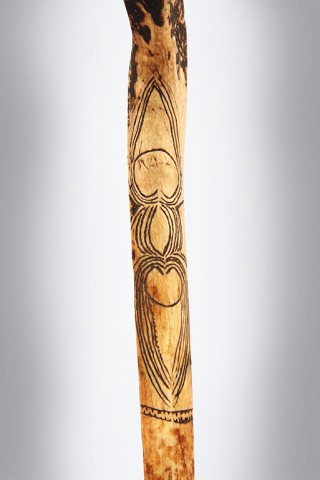
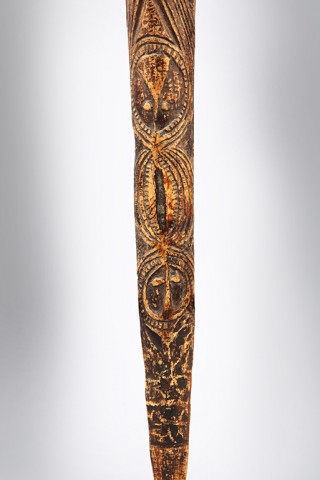
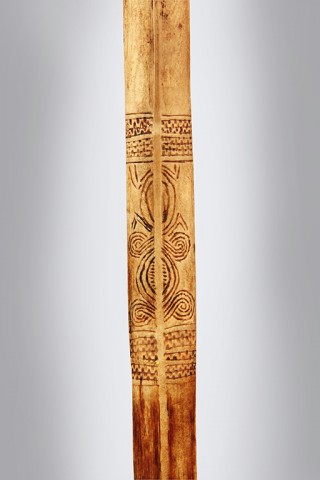
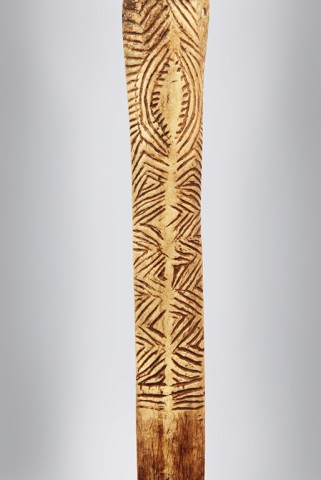
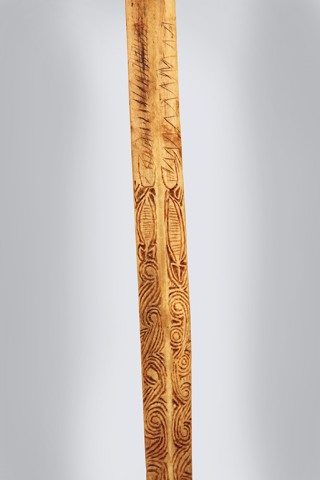
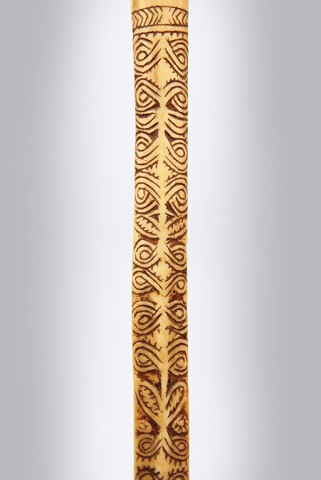
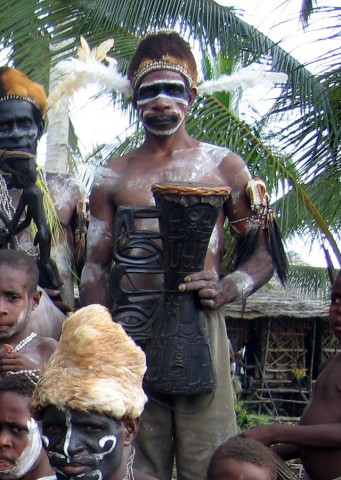


Comments 1
Hi, I wonder if you can help? I recently came in to possession of a New Guinean Blade, fashioned from a Femur (I think) I have a few photo's. Does this look like a replica or a genuine item? I'm struggling to find a way to authenticate it. It's for my personal collection. The tip seems to be more like a barbed arrow head than these examples.
Thank you for your time.